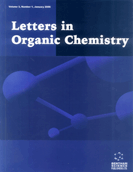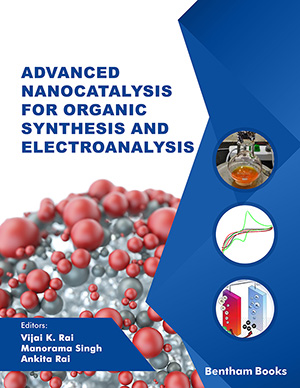Abstract
Metal-organic frameworks (MOFs) are a category of composite materials synthesized through metal ions and organic ligands. This class of material has a variety of applications, including energy storage, isolation, catalysis, sensing, cancer theranostics, and so on; this rapidly expanding class of frameworks provides advantages. However, MOF uses have not been expanded in chemosensing and neurodegenerative disease phototherapy. In recent years, there has been a lot of focus on research on metal-organic structures (MOFs) in biomedical applications. MOFs are considered promising classes of drug-related nanocarriers based on their well-defined architecture, superficial and porous surfaces, configurable pores, and simple chemical functionalization. In this report, in the first part, we explored the special proprieties of MOFs and their benefits for drug delivery as nanocarriers in biomedical applications. Adapting MOFs to therapeutic agents, like surface adsorption, pore modularity, covalent bindings, and functional molecules, were also summarized in this review. Many other MOF applications in chemotherapeutic agents were discovered in the last segment, not only for a tumor laser treatment but also for neurodegenerative diseases like Alzheimer's (AD). Presently, highly responsive Alzheimer's biomarkers (AD) are essential for us in preventing and diagnosing AD, i.e., presenilin 1, amyloid β-protein (Aβ), as well as acetylcholine (ACh). The brain's deviant amyloid-β peptide (Aβ) mixture is the primary pathologic symptom of Alzheimer's disease (AD). Inhibiting aggregation is regarded as an appealing preventive action to alleviate amyloid neuroinflammation. In this study, we looked at how effective response and AD diagnosis have changed, and I looked at the future of MOFs in this field.
Keywords: Composite materials, organic ligand, frameworks, biomedical application, chemical functionalization, acetylcholine.
[http://dx.doi.org/10.1021/ja00197a079]
[http://dx.doi.org/10.1002/adma.201002854] [PMID: 20972981]
[http://dx.doi.org/10.1021/cr300014x] [PMID: 22280456]
[http://dx.doi.org/10.1126/science.1230444] [PMID: 23990564]
[http://dx.doi.org/10.1039/C4CC04458D] [PMID: 25116412]
[http://dx.doi.org/10.1126/science.1192160] [PMID: 20595583]
[http://dx.doi.org/10.1021/cm1012119]
[http://dx.doi.org/10.1016/j.arabjc.2016.01.003]
[http://dx.doi.org/10.1039/C0DT00708K] [PMID: 20963251]
[http://dx.doi.org/10.1186/s13065-017-0330-0] [PMID: 29086865]
[http://dx.doi.org/10.1021/acs.jpclett.5b01135] [PMID: 26268796]
[http://dx.doi.org/10.1039/C7CC05927B] [PMID: 28936534]
[http://dx.doi.org/10.1007/s11356-016-7053-y] [PMID: 27300166]
[http://dx.doi.org/10.1016/j.addr.2011.09.009] [PMID: 21983079]
[http://dx.doi.org/10.1016/0169-409X(95)00031-2]
[http://dx.doi.org/10.1016/S0169-409X(96)00401-2]
[http://dx.doi.org/10.3390/molecules25061291] [PMID: 32178399]
[http://dx.doi.org/10.1016/j.ejpb.2007.08.001] [PMID: 17826969]
[http://dx.doi.org/10.1021/ja076094v] [PMID: 17880091]
[http://dx.doi.org/10.1039/c2jm16344f]
[http://dx.doi.org/10.1002/adma.200801851]
[http://dx.doi.org/10.1021/ja0627444] [PMID: 16834362]
[http://dx.doi.org/10.1021/am200075q] [PMID: 21456529]
[http://dx.doi.org/10.1021/la9906119]
[http://dx.doi.org/10.1016/j.colsurfb.2011.03.033] [PMID: 21501952]
[http://dx.doi.org/10.1021/cr200256v] [PMID: 22168547]
[http://dx.doi.org/10.1038/nmat2608] [PMID: 20010827]
[http://dx.doi.org/10.1039/c003084h] [PMID: 20485835]
[http://dx.doi.org/10.1021/ja803383k] [PMID: 18686947]
[http://dx.doi.org/10.3389/fbioe.2021.603608] [PMID: 33777907]
[http://dx.doi.org/10.1021/ie101312k]
[http://dx.doi.org/10.1039/B618320B] [PMID: 18197340]
[http://dx.doi.org/10.1002/anie.200601878] [PMID: 16897793]
[http://dx.doi.org/10.1002/chem.200305413] [PMID: 15034882]
[http://dx.doi.org/10.1021/ja710973k] [PMID: 18454528]
[http://dx.doi.org/10.1021/jacs.8b04435] [PMID: 29989808]
[http://dx.doi.org/10.1081/CLT-200045006] [PMID: 15641639]
[http://dx.doi.org/10.1081/CLT-51867] [PMID: 15822758]
[http://dx.doi.org/10.1177/0885066606290386] [PMID: 16946442]
[http://dx.doi.org/10.2217/nnm.11.75] [PMID: 21793680]
[http://dx.doi.org/10.1002/anie.200604306] [PMID: 17385775]
[http://dx.doi.org/10.1063/1.4904069]
[http://dx.doi.org/10.1080/15563650.2018.1533727] [PMID: 30576252]
[http://dx.doi.org/10.1016/S0140-6736(68)92204-6] [PMID: 4170991]
[http://dx.doi.org/10.1021/acsomega.0c04019] [PMID: 33403258]
[http://dx.doi.org/10.1021/bm900043e] [PMID: 19290624]
[http://dx.doi.org/10.1038/nrn3880] [PMID: 25991443]
[http://dx.doi.org/10.1126/science.1072994] [PMID: 12130773]
[http://dx.doi.org/10.1007/s00259-007-0699-4] [PMID: 18196237]
[http://dx.doi.org/10.1038/nrd3505] [PMID: 21852788]
[http://dx.doi.org/10.1021/cr9000176] [PMID: 19637926]
[http://dx.doi.org/10.1016/j.nicl.2017.01.018] [PMID: 28180077]
[http://dx.doi.org/10.1021/acsnano.5b03124] [PMID: 26440073]
[http://dx.doi.org/10.1002/chem.201404562] [PMID: 25376633]
[http://dx.doi.org/10.1021/nn300489k] [PMID: 22686577]
[http://dx.doi.org/10.1016/j.biomaterials.2020.120160] [PMID: 32540758]
[http://dx.doi.org/10.1002/chem.201805835] [PMID: 30601592]
[http://dx.doi.org/10.1038/nchem.2550] [PMID: 27657874]
[http://dx.doi.org/10.1021/bi8009339] [PMID: 18729385]
[http://dx.doi.org/10.1002/anie.201308001] [PMID: 24339209]
[http://dx.doi.org/10.1016/j.biomaterials.2014.10.058] [PMID: 25457982]
[http://dx.doi.org/10.1021/acsami.8b15452] [PMID: 30338980]
[http://dx.doi.org/10.1016/j.biomaterials.2016.04.034] [PMID: 27155362]
[http://dx.doi.org/10.1039/C1SC00631B]
[http://dx.doi.org/10.1002/smll.201701817] [PMID: 29024506]
[http://dx.doi.org/10.1039/D0AN00440E] [PMID: 32458857]
[http://dx.doi.org/10.1021/cr300009x] [PMID: 22793492]
[http://dx.doi.org/10.1038/nrneurol.2013.21] [PMID: 23399647]
[http://dx.doi.org/10.1016/S1474-4422(09)70299-6] [PMID: 20083042]
[http://dx.doi.org/10.1016/S1474-4422(10)70119-8] [PMID: 20610346]
[http://dx.doi.org/10.3390/ijms15034671] [PMID: 24646911]
[http://dx.doi.org/10.1016/S0140-6736(15)01124-1] [PMID: 26921134]
[http://dx.doi.org/10.1021/acschemneuro.8b00182] [PMID: 29944336]
[http://dx.doi.org/10.1186/1750-1326-5-45] [PMID: 21040568]
[http://dx.doi.org/10.1021/acsnano.7b07625] [PMID: 29364648]
[http://dx.doi.org/10.1021/acs.chemrev.5b00125] [PMID: 26312730]
[http://dx.doi.org/10.1002/smll.201500802] [PMID: 26193176]
[http://dx.doi.org/10.1021/acsami.6b14795] [PMID: 28079361]
[http://dx.doi.org/10.1149/1945-7111/abb6cc]
[http://dx.doi.org/10.1002/adma.201707365] [PMID: 29876985]
[http://dx.doi.org/10.1021/ar200028a] [PMID: 21648429]
[http://dx.doi.org/10.1002/adtp.201800100]
[http://dx.doi.org/10.1021/acsami.0c11064] [PMID: 32897042]
[http://dx.doi.org/10.1021/acs.jmedchem.6b00166] [PMID: 27088900]
[http://dx.doi.org/10.1021/acs.inorgchem.7b02929] [PMID: 29488748]


























